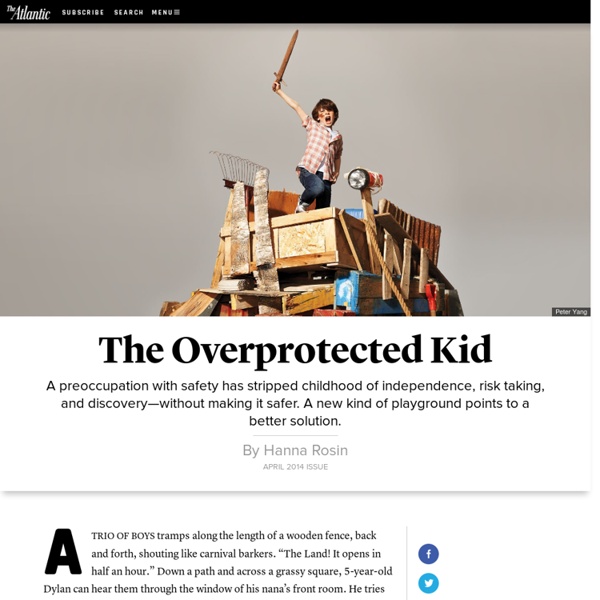The Overprotected Kid

Who' s Who in Human Learning
by Denise Kay, University Of Central Florida Welcome to Who's Who in Human Learning, a Webquest designed to introduce undergraduate and graduate students to theories of human learning. By completing this webquest you will; a) be introduced to a variety of learning theories and/or models of learning, b) be introduced to various theorist who contributed to our understanding of human learning c) identify the contributions that various learning theorist have made to the field of human learning Piaget Vygotsky Thorndike Do you slow down when you drive by an elementary school? Why? How do you think learning occurs? Even basic ideas about how humans learn can be of great use, whether it is used to understand daily interactions with peers, parents, children or co-workers. Do you think it is important to have well-informed ideas about how learning occurs? By the way, one explanation for why you slow down when you drive by an elementary school is provided in the conclusion.
Successful Teaching
Curricular Identity
Resources related to effective teaching
Shaping Curricular Identity resources
Watch the Thai Commercial That Has Half the World Sobbing Uncontrollably
Looking for a tear-jerker today? Thai mobile company TrueMove has got you covered with this story of a noodle seller whose generous act toward a young boy with a sick mother brings unexpected rewards 30 years later. With almost 6 million hits in just a few days, the ad is getting lots of press. The tagline is, "Giving is the best communication." It's not entirely clear (at least in the ad) how that relates to a mobile company, but frankly, it doesn't need to. The buzz (and the vague hope that it will encourage random acts of kindness among viewers) is all that really matters. Oddly, instead of focusing on the story, a bunch of bloggers have latched onto the ad and are using it to start a flame war with American advertisers about why we can't come up with ads this moving and cinematic. I guess that was a different kind of crying game.
Stanford University and Khan Academy use flipped classroom for medical education
To help medical students progress faster and find their calling in the field, two educators suggest moving content delivery out of the classroom may be the way to bring the students back in. The plan, featured in the October edition of Academic Medicine, comes from Charles G. Prober, senior associate dean of medical education of the Stanford University School of Medicine, and Salman Khan, founder of the Khan Academy. Khan and Prober present a three-step road map: First, identifying a core curriculum with concepts and lessons that can be taught through the kinds of short, focused video clips pioneered by the Khan Academy; then, changing static and poorly attended lectures into interactive sessions where students can practice that curriculum; and finally, letting students explore their passion -- from bioengineering to public health -- early on in their med school careers. The act of posting abbreviated lectures online is not a groundbreaking idea, nor is it a first for medical education.
Related:
Related:



